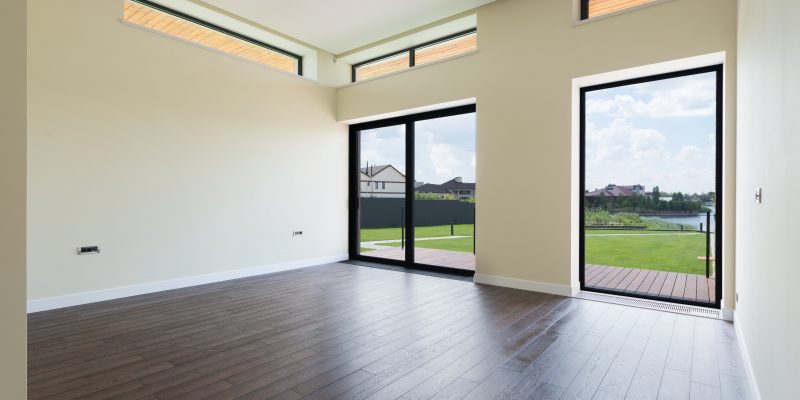In our day to day life we observe various types of Glass. Glass differs in terms of their chemical composition, the method used to produce them or their processing behavior. Normally they are considered according to their chemical composition. Glass plays a crucial role in modern architecture, providing aesthetic appeal, transparency, and functionality to various structures.
But when it comes to selecting the right type of glass according to our requirements it becomes difficult. There are three popular types of glass annealed glass, toughened glass and laminated glass.
Let’s talk about each of these one by one:
1. Annealed Glass:
It is also known as float glass. It undergoes a slow cooling process to relieve internal stresses, making it less prone to breakage than raw glass. However when it does break, it breaks into large and sharp pieces, causing potential safety risk.
Pros of Annealed Glass:
- Easy to customize. You can cut it anytime.
- It is the most cheapest glass type
Cons Annealed Glass:
- It has less strength as compare to tempered glass
- Annealed glass has no safety features and can be dangerous where the impact risk is high.
- Annealed glass is also not temperature resistant and can have cracks in too much cold or hot temperature.
USES OF Annealed Glass:
It can be used in
- Residential windows
- Picture frames.
- Decorative glass
- Interior Glass partitions.
- Greenhouses.
- Glass doors
- Automotive Applications
- Architectural uses
- Furniture
- Simple glass mirrors
2. Toughened Glass:
Toughened glass, also known as tempered glass, is a type of safety glass that has undergone a specific heat treatment process to enhance its strength and safety. They are also known to be stronger than annealed glass. As Toughened glass is strong they reduce the risk of damage and of they came in contact with disaster.
Pros of Toughened Glass
- It is two times stronger than annealed glass.
- It is flexible and can bear more pressure and weight than annealed glass.
- It is temperature resistant and can withstand very high or low temperatures.
Cons of Toughened glass
- It is expensive than annealed glass.
- Toughened glass cannot be cut or reshape after toughening.
Uses of Toughened Glass
- Shower Enclosures and doors
- Automotive windows
- Glass partitions
- Tabletops and shelves
- Balustrades and railings
- Storefronts and displays
- Skylights and canopies
- Ovens and kitchen appliances
- Sports arenas and stadiums
- Electronic Devices
- Facades and High rise buildings
3. Laminated Glass
In the glass industry laminated glass is the most important type of glass which finds various applications due to its properties and benefits in the field of architecture and automobile. It is durable, tough and long-lasting, and can reduce the effect of winds, earthquakes and impacts from outside. Also it is aesthetically pleasing and can be personalized to suit one’s need. Laminated has also sound-proof function , safety and security. Laminated glass is basically a two panel glass joined together with the help of a transparent layer. The two panels of glass doubles the strength of the glass panel and also prevents the shattered pieces from falling on the floor which makes it a much safer option as compared to simple toughened glass.
Pros of Laminated Glass
- It is very durable and has many times more strength than toughened glass.
- It is the safest type of glass as its pieces don’t scatter on the floor when broken and stick together with the help of a layer between two glass panels.
Cons of Laminated Glass:
- It is more expensive than regular glass. The price can be doubled because there are two glass panels.
- It is not available in less thickness. The minimum thickness you can get is 9mm.
- Like toughened glass it cannot be reshape
Uses of laminated glass:
- Automotive windshields
- Architectural windows and doors
- Skylights and glass roofs
- Glass facades
- Balustrades and Railings
- Storefronts and display cases
- Glass floors and staircases
- Hurricane-resistant windows
- Security Glazing
- Bullet-Resistant glass
- Soundproofing applications
- Public transportation
Comparison between Annealed Glass, Toughened glass and laminated glass
| Features | Annealed Glass | Toughened Glass | Laminated Glass |
| strength | Moderate | High | High |
| Safety | low | High (breaks into small harmless fragments) | High remains intact upon impact |
| Application | Residential decorative | Shower doors, partitions | Automotive windshields, Bullet-Resistant glass |
| sound insolation | limited
| limited | Excellent |
| UV Protection | limited | limited | Yes |
In conclusion understanding the unique characteristics of each type of glass will empower you to make an informed decision based on the demands of your project, ensuring a balance of functionality, aesthetics, and safety. You can consider each glass type according to your needs and requirements.




















